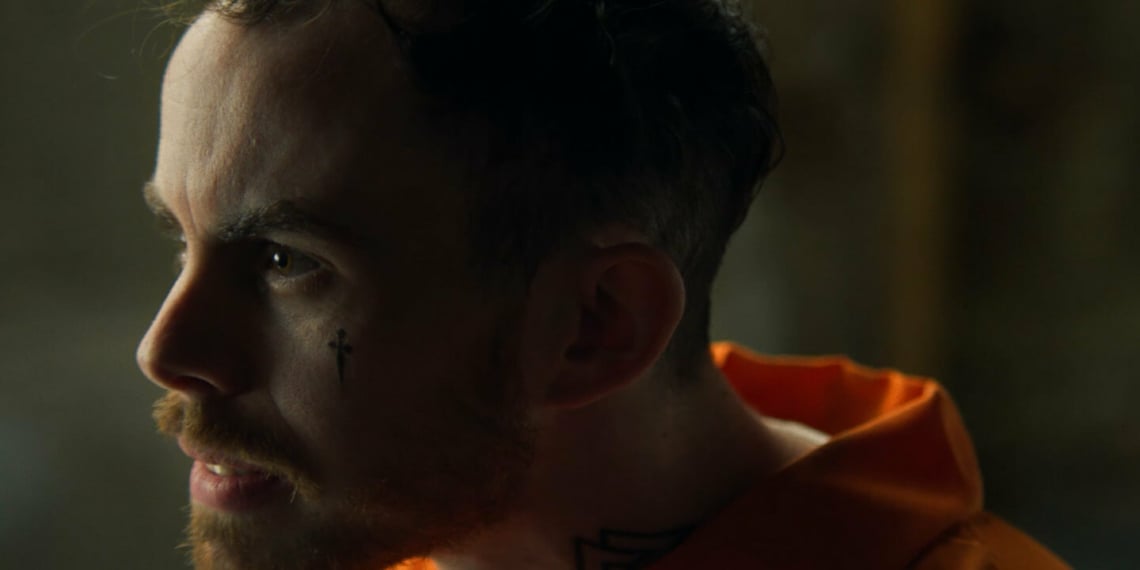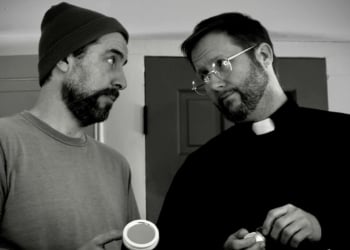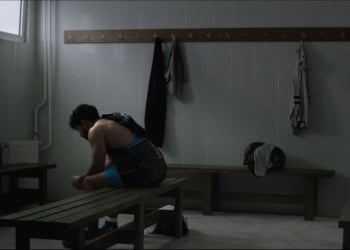Ernest Anemone’s The Last Fool is a tense, intricately woven drama of a priest’s meeting with an extremist and convicted mass shooter. Just about every line of dialogue is precisely written, and thus surprising.
It is the last days of the mass shooter, Kyle (Max MacKenzie). No specifics are given as to his conviction but the future is plain to see. Outside the walls of the prison, dissenting voices are intermittently loud. Whether they love him or hate him, they are there for him. That is his victory.
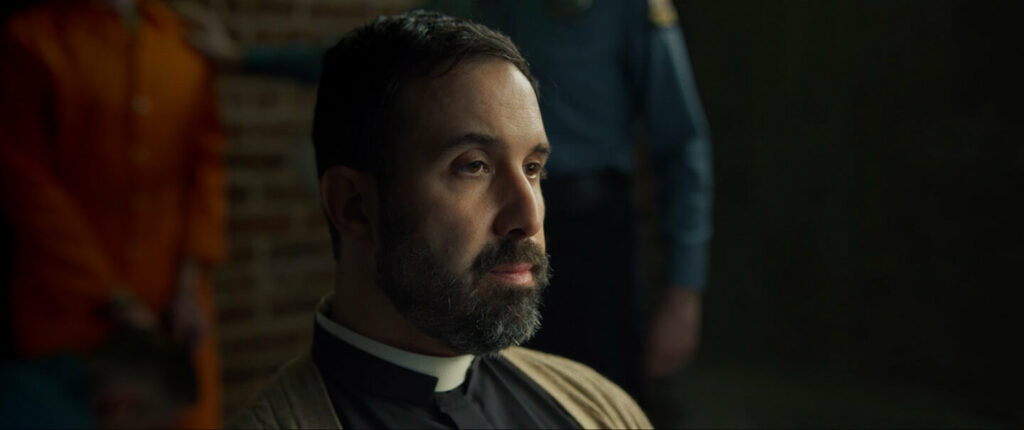
Across from him sits a priest (Anemone). It is not duty alone that has called him here, that much is clear from the man’s very posture. He begins with a tone of detached understanding, not unlike a therapist, but moves on to a storytelling role using tarot cards—Kyle is equated to the Fool. Perhaps because there are cards involved, or because the priest speaks with the inflection of mysteries about to reveal themselves, an expectation of tricks starts to form. It is a peculiar combination, priestly simplicity with a magician’s guile. Add righteous anger to it, and the tension becomes nearly tangible.
But at every turn, walls come up that compel a search for something more, something that will finally get under the skin of the prisoner, and therefore constitute a moral victory for the priest and the viewer. But there are none to be had. Kyle is smarmy, cynical, and immune. He takes delight in every ironic thought, every sarcastic jibe. Every thought he leaches of its sincerity is a triumph in his limited time, especially in the aftermath of his big victory. What could moral or religious arguments ever hope to win in the face of all that?
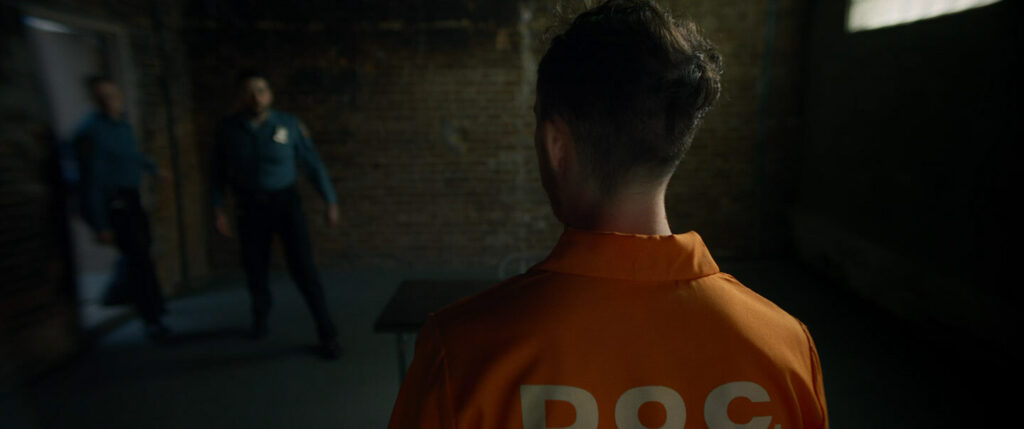
The trick of the writing is that despite exposing fleeting glimpses of sincere feeling every now and then, it is simply too brief and too slight to even begin to redeem Kyle. They work then as mere defeated possibilities that he has already summarily rejected. MacKenzie turns in an intense performance, infusing glee with mirthlessness; Anemone’s act as the priest matches him in its fragile restraint.
Even the production design conveys the powerlessness of the situation using the design and philosophy of the prison system. The priest blends into the bleak walls of the prison’s visiting room, the sun from the high windows barely makes a difference; yet, the Fool, the Joker, really, is indefatigably bright in his orange overalls. He erases shame, guilt, fear out of the signifier, and turns it into a jubilant celebration of a deed done right. In the over-the-shoulder shots, he is even radiant.
A twist concludes the narrative of The Last Fool. Displaying essentially the only instance of Kyle’s facade of glory and nonchalance falling apart, it still fails to dispel the effect he had so effectively constructed by then. Irony poisoning is a hard venom to neutralise.
Watch The Last Fool Short Film Trailer
The Last Fool: Crime Drama of an Extremist High on Irony, and a Priest Who Had to Foot the Bill
-
Direction
-
Cinematography
-
Screenplay
-
Editing
-
Music


